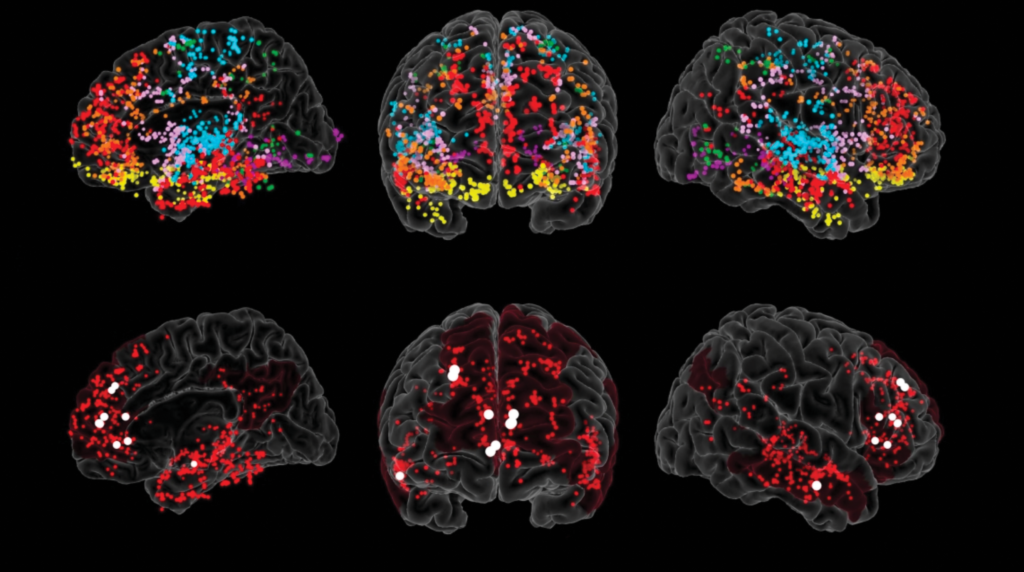Have you ever had the solution for a tough problem suddenly hit you when you’re thinking about something entirely different? Creative thought is a hallmark of humanity, but it’s an ephemeral, almost paradoxical ability, striking unexpectedly when it’s not sought out.
And the neurological source of creativity—what’s going on in our brains when we think outside the box—is similarly elusive.
But now, a research team led by a University of Utah Health researcher has used a precise method of brain imaging to unveil how different parts of the brain work together in order to produce creative thought. Their findings were published in the journal BRAIN last summer.
Ben Shofty, assistant professor of neurosurgery in the Spencer Fox Eccles School of Medicine and senior author on the paper, suspected that creative thought might rely strongly on the default mode network (DMN), associated with daydreaming and internally focused thinking. Using electrodes implanted in the brains of epilepsy patients, the researchers tracked brain activity during creative tasks. They found that the DMN activated first, then synchronized with regions involved in complex problem-solving.

“We could see what’s happening within the first few milliseconds of attempting to perform creative thinking,” Shofty notes. When researchers temporarily dampened DMN activity, participants’ ideas became less creative, showing the network’s crucial role in creativity.
The researchers say understanding the DMN’s normal operation could lead to better treatments for conditions like ruminative depression, where the network is overactive. Additionally, Shofty hopes this research will eventually inspire interventions to enhance creativity. “The goal would be to understand what happens to the network in such a way that we can potentially drive it toward being more creative.”



Comments
Comments are moderated, so there may be a slight delay. Those that are off-topic or deemed inappropriate may not be posted. Your email address will not be published. Required fields are marked with an asterisk (*).